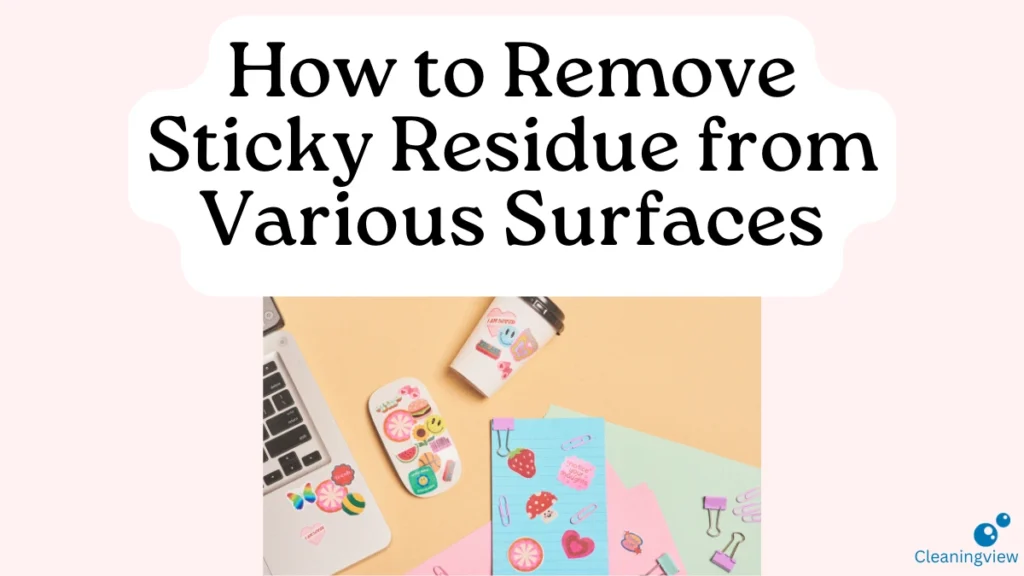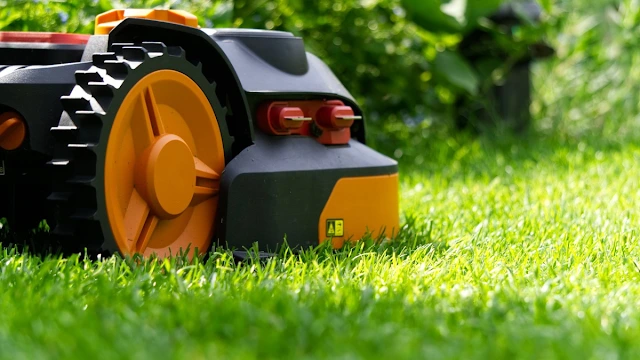
Sticky residue can be a real nuisance, clinging stubbornly to a wide range of surfaces. Whether it’s leftover adhesive from a sticker, tape, or even a spilled sugary substance, removing it can often feel like an impossible task. However, with the right techniques and tools, you can easily get rid of sticky residue without damaging the underlying surface.
In this comprehensive guide, we’ll explore various methods to remove sticky residue from different surfaces. By the end, you’ll have a clear understanding of how to tackle this common household problem with confidence.
Introduction
Sticky residue can be frustrating. Whether it’s from a price tag on a new purchase, tape remnants after a party, or a child’s sticker collection, it’s something we’ve all dealt with. Removing sticky residue is important, not just for the appearance of your items but also for maintaining their quality.
Importance of Removing Sticky Residue
Ignoring sticky residue can lead to dirt buildup, which may cause permanent stains or damage over time. On delicate surfaces, residue can become even more problematic, potentially harming the finish or material.
Common Surfaces Affected by Sticky Residue
Sticky residue can end up on almost anything. Common surfaces include glass, plastic, wood, metal, fabric, and even painted walls. Each material requires a different approach for safe and effective removal.
Tools and Materials Needed
Basic Tools for Removing Sticky Residue
Before you start, gather the essential tools:
| Items | Description |
| Cotton swabs | Great for precision cleaning and applying small amounts of cleaning solution. |
| Plastic scraper | Useful for lifting off stubborn grime without damaging the underlying surface. |
| Sponge | Absorbs liquids well and can be used with various cleaning agents for effective scrubbing |
| Soft cloth | Perfect for polishing surfaces and ensuring a streak-free finish. |
These tools will help you remove the residue without scratching or damaging the surface.
Safe Cleaning Agents for Different Surfaces
Having the right cleaning agent is key. Some commonly used products include:
– Rubbing alcohol
– Vinegar
– Baking soda
– Goo Gone or similar adhesive removers
Each agent works best on specific surfaces, so it’s important to know which one to use.
How to Remove Sticky Residue from Glass
Step-by-Step Process
Removing sticky residue from glass is usually straightforward:
1. Soften the Residue: Apply a few drops of rubbing alcohol or vinegar to the area. Let it sit for a minute.
2. Wipe Off the Residue: Use a soft cloth or paper towel to gently wipe away the residue.
3. Scrape if Necessary: For tougher spots, use a plastic scraper to lift the residue. Be careful not to scratch the glass.
4. Clean the Surface: Finish by cleaning the glass with a glass cleaner to remove any streaks.
Additional Tips for Delicate Glass Items
For items like eyeglasses or glass tabletops, avoid using abrasive materials. Stick to soft cloths and gentle cleaning agents.
Removing Sticky Residue from Plastic
Common Challenges with Plastic
Plastic can be tricky because some cleaning agents might react with the material, causing it to become cloudy or discolored.
Effective Cleaning Methods
1. Apply Oil: Dab a small amount of vegetable oil or baby oil onto the residue. Let it soak in for a few minutes.
2. Rub Gently: Use a cloth to rub the area in circular motions.
3. Wash with Soap: After the residue is gone, wash the plastic with warm, soapy water to remove any oily residue.
Avoid using strong solvents like acetone, as they can damage the plastic surface.
Getting Rid of Sticky Residue on Wood
Types of Wood Surfaces
Wood surfaces vary, from finished furniture to raw wood. The method you choose depends on the type of wood you’re dealing with.
Safe Cleaning Techniques
1. Use a Mild Cleaner: Mix a few drops of dish soap with warm water. Dampen a cloth with the solution.
2. Wipe the Area: Gently rub the sticky spot. For tough residue, you can use a little vinegar, but be cautious as it might affect the wood’s finish.
3. Dry the Surface: Make sure to dry the wood immediately to prevent water damage.
Eliminating Sticky Residue from Metal Surfaces
Suitable Cleaning Agents for Metal
Metal surfaces can generally handle stronger cleaning agents, but it’s essential to avoid anything that might cause rust.
Special Considerations for Polished Metal
1. Apply Rubbing Alcohol: Moisten a cloth with rubbing alcohol and rub the sticky area.
2. Use a Scraper: If the residue is stubborn, carefully use a plastic scraper. Metal tools can scratch the surface, so avoid them.
3. Polish the Metal: Finish by polishing the metal with a dry cloth to restore its shine.
Cleaning Sticky Residue from Fabric
Handling Different Types of Fabric
Fabrics are delicate, and residue removal depends on the fabric type. Always check the care label before attempting any cleaning.
Stain Removal Tips
1. Freeze the Fabric: Place the fabric in the freezer for a few hours. This can harden the residue, making it easier to scrape off.
2. Apply Dish Soap: For remaining residue, apply a small amount of dish soap directly onto the spot. Gently work it into the fabric, then rinse.
3. Wash Normally: After treating the residue, wash the fabric as usual according to its care instructions.
How to Remove Sticky Residue from Painted Walls
Avoiding Damage to Paint
Painted walls are particularly sensitive. Removing sticky residue without damaging the paint requires care.
Recommended Cleaning Products
1. Use a Gentle Cleaner: Start with a mixture of warm water and a few drops of dish soap. Apply it to the residue with a soft cloth.
2. Avoid Scrubbing: Scrubbing too hard can remove the paint along with the residue. Instead, gently dab at the sticky spot.
3. Try Baking Soda: If soap and water don’t work, make a paste with baking soda and water. Apply it to the residue, let it sit for a few minutes, then wipe away.
Dealing with Sticky Residue on Ceramic and Tile
Suitable Tools for Tile Cleaning
Tiles are durable, but grout lines can be sensitive. Use a plastic scraper or an old toothbrush for scrubbing the residue.
Preventing Residue Build-Up
Regular cleaning is the best way to prevent sticky residue on tiles. After every cleaning, dry the tiles to prevent any adhesive substances from setting in.
Natural Remedies for Sticky Residue Removal
Benefits of Using Natural Cleaners
Natural cleaners are safe for most surfaces and are often just as effective as commercial products. They are also better for the environment and your health.
Common Household Items for Residue Removal
1. Vinegar: Works well on glass, plastic, and metal.
2. Baking Soda: Ideal for surfaces like tile and painted walls.
3. Coconut Oil: Great for wood and plastic.
When to Use Commercial Products
Pros and Cons of Commercial Cleaners
Commercial products are specifically designed to tackle sticky residue. They often work faster and require less effort, but they can be harsh on certain surfaces and may contain chemicals.
Best Products on the Market
– Goo Gone
– WD-40
– 3M Adhesive Remover
These products are widely available and effective, but always test them on a small, inconspicuous area first.
Preventing Sticky Residue
Tips for Avoiding Sticky Residue in the First Place
1. Use Non-Stick Products: Opt for non-stick tape or labels when possible.
2. Keep Surfaces Clean: Regular cleaning can prevent residue from building up.
3. Avoid Sticky Situations: Be mindful of where you place sticky items, especially on delicate surfaces.
Protective Measures for Different Surfaces
Consider using protective coatings like wax or sealants on wood and metal to prevent residue from sticking.
Handling Stubborn Residue
What to Do When Residue Won’t Budge
If you’ve tried everything and the residue is still there:
1. Soak the Area: Apply a generous amount of cleaning agent and let it sit longer.
2. Use Heat: A hairdryer can soften the residue, making it easier to remove.
Advanced Cleaning Techniques
For extremely stubborn residue, you might need to sand down the area (for wood) or use a stronger solvent (for metal). Always proceed with caution to avoid damaging the surface.
Safety Precautions
Protecting Your Skin and Eyes
Some cleaning agents can be harsh on your skin and eyes. Always wear gloves and, if necessary, goggles when handling strong chemicals.
Safe Disposal of Cleaning Agents
Dispose of any leftover cleaning agents responsibly. Never pour them down the drain unless they are labeled as safe for disposal.
Conclusion
Sticky residue is a common problem, but with the right approach, you can remove it from any surface without much hassle. By understanding the best methods and tools for each material, you’ll save time and avoid unnecessary damage. Experiment with different techniques and find what works best for you. Whether you prefer natural remedies or commercial products, the key is to be patient and persistent.
FAQs: Remove Sticky Residue from Various Surfaces
Q: Can Sticky Residue Damage Surfaces?
Yes, if left untreated, sticky residue can attract dirt and cause permanent stains or damage to surfaces.
Q: What if the Sticky Residue is on a Sensitive Surface?
For sensitive surfaces, use mild cleaners like diluted dish soap or natural products like vinegar. Always test on a small area first.
Q: Are There Surfaces That Should Be Left to Professionals?
If you’re dealing with valuable or antique items, it’s best to consult a professional to avoid accidental damage.
Q: How Often Should I Clean Surfaces to Avoid Sticky Residue?
Regular cleaning, at least once a week, can help prevent sticky residue from building up.
Q: Can Sticky Residue Be Prevented Altogether?
While it’s challenging to avoid sticky residue entirely, using non-stick products and regularly cleaning surfaces can significantly reduce the risk.
Read More
https://cleaningview.ca/how-to-sort-clean-and-store-your-seasonal-clothes/
Important: The information provided here in the post is for general informational purposes only. It should not be taken as professional or any other type of advice. Always seek the advice of a qualified professional before implementing this information on your own. Thank you!
Add CleaningView To Your Google News Feed


